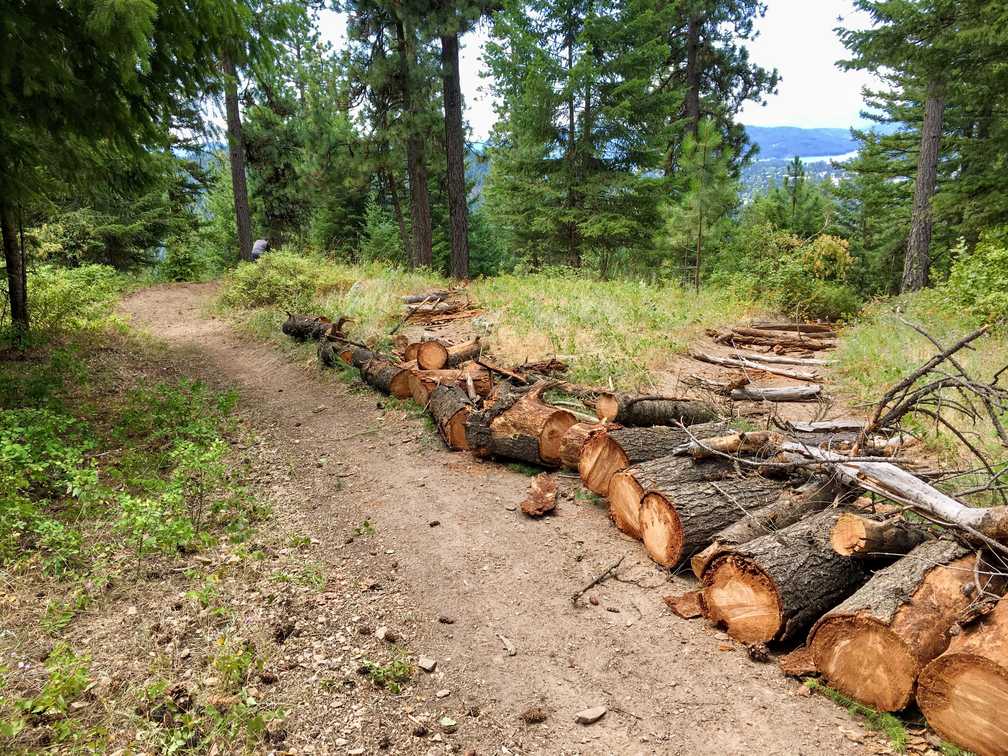Traffic Calming
Yesterday our trail work party focused on traffic calming at the national forest boundary. There has long been an informal trail that crosses from national forest land into the Cancourse, and over time that crossing has become a braid of several heavily eroded strands. We have two challenges to surmount:
- The established strands are all so steep that hikers continue to expand the braid because the footing is insecure during dry times. Left to the status quo, the impacted area will continue to expand.
- Motorcyclists continue to enter the Cancourse via this trail, despite signage prohibiting entry. Thus additional inconvenience beyond mere notification of illegal trespass is in order.
Yesterday’s work was a significant early step in addressing these issues. We are preparing to string wire on the already-placed T-posts, and install a bollard-based barrier that allows hikers and bicyclists through while excluding motorcycles. First though we had to slow down downhill traffic to avoid creating a hazard at the boundary – all of the trail braid strands were steep at the boundary, such that bicyclists were accustomed to carrying significant speed downhill. We decommissioned most of the braid, while combining parts of existing strands to create an arc that eventually parallels the boundary, at the same time as transitioning from steep to approximately level. (Note: This work was performed in cooperation with the Lake City Trail Alliance, which is authorized to perform trail maintenance in this area. If you care about local trails, please consider supporting the organization via membership.) As a precaution against riders choosing new lines and hitting the fence, we installed temporary orange construction fencing to make the boundary highly visible. We expect to complete the fencing and barrier this year, but we don’t have a precise timeline for erosion control and restoration on the Cancourse side of the boundary.
Placing debris on braid strands to decommission them.
The top of the braid, with only the leftmost strand preserved.
Mid-braid; the remaining trail arcs to the right.
Connecting strands to create an off-camber arc that eventually parallels the boundary.
The final stretch of arc, with the boundary to the left.





